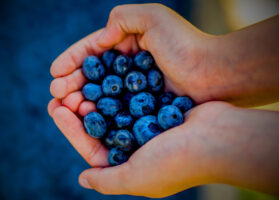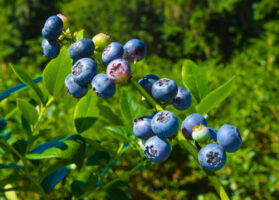Agronometrics in Charts: Washington Apples Making a Comeback This Season
In this installment of the ‘Agronometrics In Charts’ series, Sarah Ilyas studies the state of Washington’s apple season. Each week the series looks at a different horticultural commodity, focusing on a specific origin or topic visualizing the market factors that are driving change.
The Washington State Tree Fruit Association has projected the state’s apple yield for the current year to surpass 134 million standard 40-pound boxes of fresh apples, reflecting a substantial increase of 28.8% in comparison to the 104.3 million boxes recorded in 2022. Furthermore, the association’s comprehensive forecast underscores the industry’s emphasis on varietal diversification. This is evident through the prevalence of prominent cultivars such as Honeycrisp, Ambrosia, Envy, and Cosmic Crisp, collectively constituting over twenty-five percent of the projected production volume.
Conditions this year stand in stark contrast to 2022, a year marked by snow-induced impediments during the bloom phase. Temperate climatic conditions this season have been instrumental in enabling growers to yield a robust harvest that is projected to be 5 percent above the production averaged over the past six years. This reversion to historical patterns is substantiated by accounts provided by growers, indicating commendable uniformity in size distribution and superior quality across all varieties. “It’s great for the state and for consumers around that world that our growers have rebounded from a down year with a strong, healthy crop in 2023. More importantly, thanks to moderate weather the quality of apples is exceptionally high. Apples are Washington state’s calling card to every corner of the globe. This year, we are literally putting our best crop forward and that’s good for our state economy, our workforce, and our growers,” says Derek Sandison, director of the Washington State Department of Agriculture.

Source: USDA Market News via Agronometrics.
(Agronometrics users can view this chart with live updates here)
Prices in week 31 averaged $33.38 per package, up from $27.36 per package a year ago and up from $29.90 per package two years ago.
“Our growers have a long tradition of meeting consumer demand and they are proving it again by producing more than 93% of the country’s organic apple output,” says Jon DeVaney, WSTFA’s president. The organic forecast for 2023 is 15.7% of the state-wide harvest. Washington has a unique climate that allows for such robust-organic apple production, DeVaney added.

Source: USDA Market News via Agronometrics.
(Agronometrics users can view this chart with live updates here)

Source: USDA Market News via Agronometrics.
(Agronometrics users can view this chart with live updates here)
As per the USDA retail report released on August 4, a mere 9,998 retail establishments were promoting apples in early August. This figure represents a substantial decline from the count of 22,092 stores recorded in the preceding year and a further reduction from the tally of 14,860 stores registered two years prior. As the harvest process gains momentum, the expanded crop volume is expected to furnish retailers with higher promotional prospects in contrast to the market conditions observed during 2022.
Washington apples hold significant economic importance for the state, serving as its predominant agricultural commodity in terms of production value. In 2021, apples contributed to 21% of the total agricultural value of the state. In 2022, a notable 20% of the harvest was designated for export, a decline from the established five-year average of 28%. This reduction can be attributed to the diminished overall production during that year. In a typical year, the apple harvest alone generates a substantial economic impact, amounting to a total of $7.5 billion for the state. This economic contribution is reinforced by its role in supporting close to 40,000 direct job opportunities and an additional 21,000 indirect employment opportunities across various support industries.
In our ‘Interviews’ series, we work to tell impactful stories by collaborating with leaders in the industry. Feel free to take a look at the other articles by clicking here.
All pricing for domestic US produce represents the spot market at Shipping Point (i.e. packing house/climate controlled warehouse, etc.). For imported fruit, the pricing data represents the spot market at Port of Entry.
You can keep track of the markets daily through Agronometrics, a data visualization tool built to help the industry make sense of the huge amounts of data that professionals need to access to make informed decisions. If you found the information and the charts from this article useful, feel free to visit us at www.agronometrics.com where you can easily access these same graphs, or explore the other 21 commodities we currently track
Written by: Sarah Ilyas






